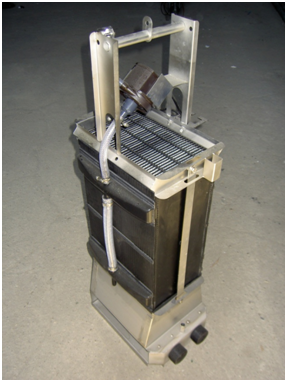Membrane bioreactors, commonly known as MBR, represent a combination of the principle based on biochemical processes occurring by means of metabolic lines of the present microorganisms, so-called activated sludge, and the principle of filtration through a solid screen. By various species if bacteria, viruses, fungi and higher microorganisms, the unwanted ingredients of waste water are transformed into components harmless to the environment. This principle has been known and widely used for more than a hundred years. It is continuously modified to achieve the highest possible quality of the outflow and to minimize the impact of human activity on the quality of water in the environment. Economic aspects are also important, so there are modifications to save financial funds. One of the modifications, whose importance has been growing recently, is membrane bioreactors. Membrane bioreactors offer many advantages. These primarily include the high quality of refined waste water that can be further used. After passing through MBR, water contains low concentrations of chemical pollutants, as well as low concentrations of microorganisms, which in case of “traditional” waste water treatment plants escape into the outflow and their concentration are very high. Refined waste water after passing through MBR can be used as operational, rinsing or irrigation water etc.
Recently, higher volumes of various xeniobiotics have been detected in the environment, coming e.g. from pharmaceutical products and hormonal contraception. These substances can influence hormonal functions of water animals or reach consumers of drinking water through water circulation. It was demonstrated that the conditions in MBR allow removing some of these substances. Membrane bioreactors also allow producing water in basically any quality, depending on the size of the membrane pores, i.e. on the applied process. This fact is very favourable from the practical point of view. However, it is always necessary to find a compromise between the desired quality of refined water and economic demands of the entire process.
The main disadvantage of MBR seems to be fouling of the membrane surface during the operation (filtration). Fouling of the membrane surface is a very complex problem and result of many processes – physical, physical-chemical, chemical and biochemical. Despite all advantages of MBR, fouling of the membrane surface is a limiting factor preventing wide expansion of this technology in the area of waste water treatment. Therefore the fouling process is studied intensively to find various methods to minimize it. Very modern methods include e.g. the application of silver nano-particles, which should eliminate fouling caused directly by microorganisms of activated sludge. Another field of study is the possible interaction between various bacteria of activated sludge, which colonize the membrane surface and cause its gradual fouling. It is supposed that if the mutual communication between bacteria is prevented, the fouling component caused by bacteria and their products will be limited. However, all these methods are at the beginning of investigation and many tests must be performed to confirm or refute all hypothetical possibilities.
The following pictures were prepared by our collaborator Ing. Lukáš Dvořák, Ph.D.

Laboratory MBR reactor

Operational membrane module



































 EUROPEAN UNION
EUROPEAN UNION